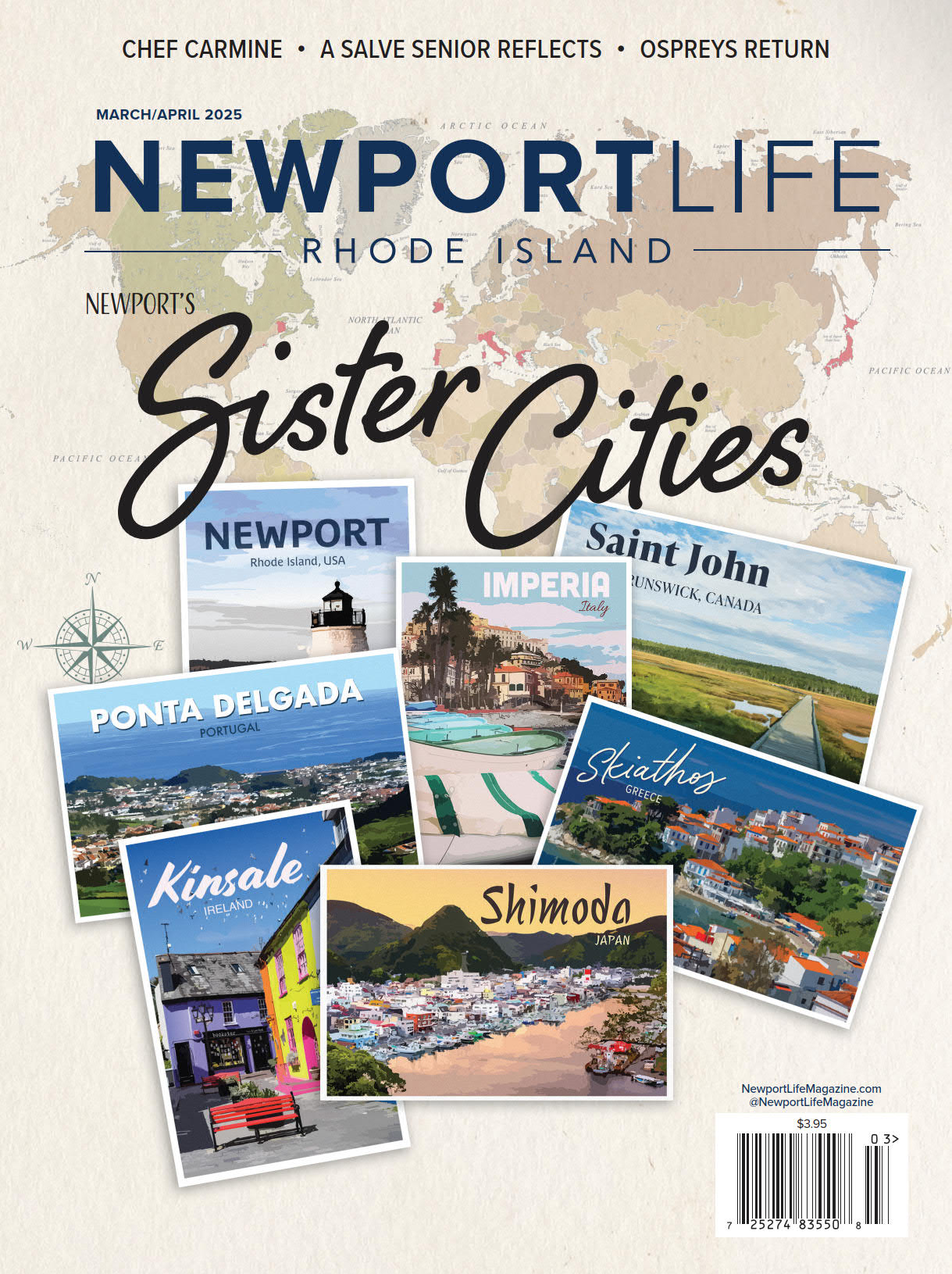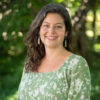“A Name, A Voice, A Life” – Newport Historical Society showcases Black history
By Helena Touhey
A new database and exhibit at the Newport Historical Society explore local Black history from the 17th-19th centuries
On a spring afternoon, a handful of students gathered in the Rogers High School library, transcribing names onto small notecards.
Henry Green. Nanny. James Hull. Mingo. Daniel Prophet. Jacob Perry.
The list went on.
Each name represents an individual of African descent who once resided in Newport, from the city’s inception in 1639 to the abolition of slavery in Rhode Island’s constitution in 1842.

Altogether, the students wrote out one hundred names, the culmination of a larger transcription project cataloguing 1,700 names, all recently unearthed in the archives of the Newport Historical Society and the focal point of a new exhibition entitled “A Name, A Voice, A Life: The Black Newporters of the 17th-19th Centuries.”
The students are members of the Key Club, a high school division of the Kiwanis Club. As they gathered for a group photo after transcribing the last of the names, two members of the Historical Society staff were visibly moved.

“This makes me so emotional,” said Kaela Bleho, collections and digital access manager, who has spent much of the past four years working on the project. She was joined by Rebecca Bertrand, the society’s executive director.
All 1,700 names are part of a new digital catalogue — “Voices from the NHS Archive.” It inspired the an exhibition that opened May 29 and is on view through Nov. 29 in the lobby and gallery space of the Historical Society offices at 82 Touro Street.
A central component of “A Name, A Voice, A Life” are the stories of five individuals included in the digital archive, which features information NHS archivists have been able to piece together from years of research. Three of these individuals will be further represented through commissioned artworks made by local Black artists — Cat Laine, Toby Sisson, and Eric Telfort — who have each created a visual representation based on the archive material.
Also on display are the handwritten names on notecards, presented as an installation, alongside objects and artifacts from the NHS collections. To make the experience even more interactive, there is a computer where visitors can access the digital database and peruse the original source material.
‘Lightbulb discoveries’
“The idea came about in 2020 when our doors were shut because of Covid,” recalls Bleho of what sparked the digitization project. “We knew there was so much information about slavery and the experiences of enslaved people.”
From the start, the initiative has been guided by Enslaved: Peoples of the Historical Slave Trade, also known as Enslaved.org, which inspired the framework and methodology for the NHS digital archive.
The archivists started from the beginning with the oldest documents in the collections (all housed within a vault in the Touro Street building) and have been working their way forward ever since; the project is very much ongoing, and the online database will be continually updated.

In the summer of 2021, the first cohort of three research fellows, all remote, was launched. Those fellows sifted through scanned manuscripts, collecting and organizing information on the individuals named.
Zoe Hume was among this cohort and has been involved in the project in some capacity ever since; she’s a co-curator of the exhibit. A PhD student at Florida State, she has helped bring the biographies to life, through her research and the entries she’s contributed to the digital database.
“I poured my heart and soul into the application,” Hume recalled, describing finding the job posting for the fellowship as serendipitous. While she grew up in Florida and has family in Massachusetts, her first visit to the Historical Society will be for the exhibition opening in May.
Hume sifted through hundreds of documents, often searching for names to repeat and for certain patterns to emerge, which would eventually form the outline of a person’s story. Sometimes, she would realize two people whose names were spelled differently were actually the same person, which she calls a “lightbulb discovery.”
“It’s an amazing moment to find the document that gives you that breakthrough,” she said.
The result of the work done by Hume and her peers is that users can search the database by setting filters for gender, race, freedom status, occupation, age or role. Different types of status can include enslaved person, enslaver or owner, free person, freed person, indentured person, apprentice or pawn.

One can also search by events, ranging from appraisal to baptism, birth, death, disappearance, education, emancipation, employment, enslavement, institutional minutes, marriage, membership, military service, receipt of funds, registry, relocation, sale, self-purchase or purchase by relatives, trade and voyage.
The terms reflect those that appear throughout the actual manuscript archives, usually in the form of church records, business papers, ship logs, census records and custom house records, among others, which have been digitized and added to the database. So far, they have digitized 4,000 pages, which is two percent of the society’s manuscript collection.
Hume, who is Black and has ancestral ties to New England, spoke of the emotional weight attached to this sort of archive work. “I like to embrace the challenges in the difficulties,” she said. Her role is essential to reshaping the narrative. “You really just have to understand that this is coming from a different moment … You have to read humanity back into it.”
“It takes a lot of courageous and intentional leadership,” Hume added. “I felt so supported in doing this work, which is one of the keys to the emotional process.”
‘Toward freedom’
As the archive work evolved and the digital database took shape, the idea to present the findings in a physical exhibit emerged.
“There’s kind of a barrier when you talk about history,” says Bertrand, who joined the historical society as executive director in January 2023. “How do we get people to respond to history?” One way, she realized, is through art, which offers another window into the lives of the individuals being named.
“Through the art we can imagine who these people were,” said Hume. “We can take our text and turn it into something more visual, that sparks imagination.”
Toby Sisson, an abstract artist who lives in Providence and teaches at Clark University, was asked to create an artwork around the life and story of Robert Wainwood, who in early 1781 sought his own freedom. In Virginia, he boarded a British ship that was captured by the French. In February of 1781 he was brought to Newport and re-sold into slavery. A lengthy and well-documented lawsuit emerged as he attempted to fight for his emancipation.

“I found his story so compelling [and] heart-wrenching,” said Sisson. His story, she notes, ends with a question mark; it’s possible he emigrated to Liberia.
Sisson often contemplates the role of fragments in her work — a favorite medium is encaustic monotype collage. When presented with the incomplete story of Wainwood, she approached the project from an assemblage perspective, asking: “How do you tell the story of an individual who has a fragmented biography?”
Part of her process entails creating the artwork in tandem with drafting an artist statement, the two continuously in conversation. The words that will accompany her piece read: “As an enslaved man born in pre-Revolutionary America, Robert Wainwood’s quest for freedom was relentless. His story is told here through abstraction—using contrast, pattern, and scale symbolically. A collage of shapes and colors represents his long journey in pursuit of emancipation. Despite the repeated loss of his liberty, Wainwood’s life is remembered for great fortitude and perseverance.”
The finished artwork is titled “The Spirit of Robert Wainwood Climbs, Sails, and Soars Toward Freedom.”
“I want people to understand that African American history is American history,” said Sisson. “This is all of our history,” whether one has a direct ancestor or not. “Your life is touched by this,” she continued, “this is the history of America, and it’s really vital we know our history.”
‘Stewards of this history’
Reframing history was central to the work of the Historical Society as it set out to build the exhibition. As an example, Bleho placed a ship log from 1736 and an African Heritage Society book of meeting minutes dated 1812 on a table a few steps from the vault where NHS manuscripts are stored. Both volumes contained the same faded, slightly torn pages bearing similar script penned in quill and ink. The contents, however, were vastly different, as are the stories they tell.

“The ship logs really drive home how people at the time were viewed as commodities,” says Bleho. “It’s very emotional to look at — you’re seeing the dehumanization of people in real time.”
The exhibition seeks to “bridge the gap” between life in the 17th Century and present day. This, Bertrand notes, is where collaborating with community groups came into play as a collective effort to “rewrite and remember” the individuals in a new light.
In addition to the Rogers Key Club, support came from an Arts Advisory at the EastBay Met School; the Dr. Martin Luther King, Jr. Community Center; NewCo Women Connect; Newport Art Museum; Newport Middle Passage Port Marker Project; The Potter League for Animals; ReNewport; Rhode Island Black Heritage Society; Rhode Island Slave History Medallions; and Salve Regina University.
For Bertrand, this work and the exhibition are part of how the Historical Society is marking the upcoming 250th anniversary of the country in 2026. “This is not what they were talking about in 1976,” she said. “We’re making sure our children are educated differently.”
At the end of this summer, the NHS archive research will be exported to Enslaved.org, part of an effort to make this information accessible to more people across multiple platforms. It will also be shared with the New England Historic Genealogical Society.
“We are the stewards of this history,” Bertrand said, “it’s our jobs to make this available to people, in whatever way gets them in the door.”
For more information about visiting the exhibition, visit newporthistory.org.



